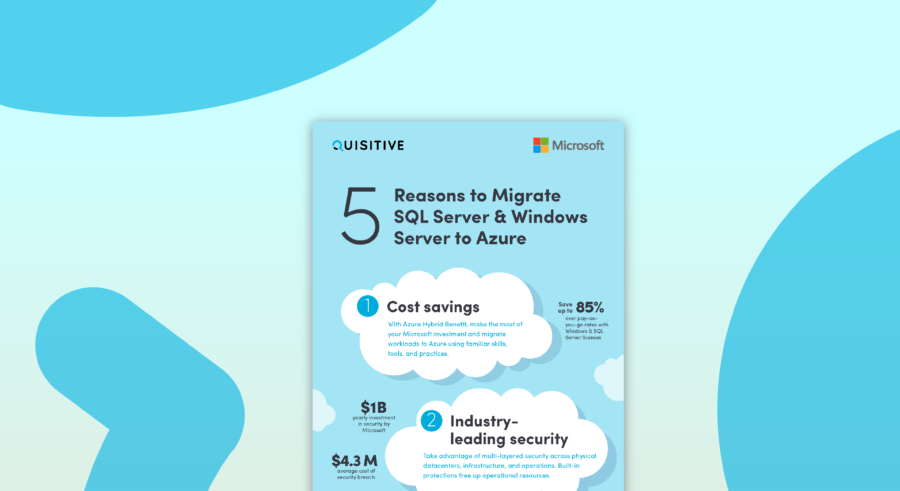In my last blog post, I likened the Azure assessment to flying a plane to Fiji. Before you’re over the ocean, you need an expert by your side to prepare you for the journey. And once you’ve taken off from the airport, you need someone to guide you in flight.
With your Azure assessment completed, your team now understands the end goals for your migration to the cloud. You have that critical data needed for calculated decision-making. It’s time to land, step onto the glistening white sand, and begin your adventure on Fiji.
Or the Azure cloud.
To migrate with maximum efficiency and gain maximum results, we need to nail the following:
1. We need to map the terrain
Whenever I travel, I start with maps to understand the terrain. For an IT environment, maps aren’t always available. Or they’re far from accurate. But old and forgotten documents are better than nothing, so we gather what we can find. This includes network diagrams, reference architecture, storage architecture, DR plans, backup and retention policies, SLAs, RPOs & RTOs, tier one application lists, application dependency mapping, application owners and SMEs, server naming conventions, or a CMDB. Old maps occasionally point to buried treasure.
Even if not current, they provide a basis for validating the expected environment. We work with your team to fill in the vital gaps as we design the new framework in Azure. Documentation helps determine the requirements for specific applications and workloads when operating in Azure. But it’s only a starting point. Maybe some applications are no longer business critical, but others have taken on added importance in daily operations. We want to know who can validate the workloads for failover testing in Azure. For legacy systems, the original owner may no longer be with the company, so we need to determine an alternate owner.
Even if we don’t have any documents, the same considerations need to be made before your migration. With Quistive as your expert guide, we cover this with your team. And in all cases, we work to integrate your requirements with best practices in Azure and help make your migration a raging success.
2. We need a logical plan
I’m a lazy traveler. I don’t want to have every minute scheduled, especially with a backdrop like the sultry South Pacific. In Fiji I’d meander, explore, and ditch my phone under the nearest coconut tree. But that’s a dangerous way to run a migration project.
For a migration to be successful, we need to know as much as we can up front, creating as detailed a plan as is logical, one that encompasses the duration of the project. After determining the VMs in scope, we work with your team to map all the system dependencies, including data sources, services, or the odd process that hits once a week. We need to determine which servers need to be migrated together. Depending on the size of the estate, we establish a number of larger migration groups or waves that will be processed in the same time frame. For those of you with an agile bent, think of these as migration sprints because we apply the same principles. Lessons learned from each migration wave are adopted into the next round, refining the process for your particular estate.
We employ a tiered testing methodology for different workloads, and we work with your team to define the testing requirements for every one of your applications before we migrate. We also consider your SLAs, your blackouts, the availability of your SMEs and application testers. We establish a migration cadence that matches the ability of your team to absorb the change. When we migrate, we can adjust that pace to suit your business needs.
During the migration, we know your team still has day jobs. While we do the heavy lifting, they can participate as much as they want for knowledge transfer and to develop the skill set for sustained operations in Azure
3. We need superior communications
When I’m tripping down the beach, I enjoy surprises–finding a rogue stingray gliding in the surf or a wary crab sidling anxiously away from me. But surprises in IT operations are rarely welcome.
Before beginning a migration, it’s important to inform everyone within the organization about the project. People react better to change when they have information and feel some ownership in achieving the goals. We need to communicate early, often, and clearly. An integral part of the migration plan is the communication plan. Not everyone needs the same level of detail or frequency of information. Each stakeholder needs to have a comms channel appropriate to their involvement. Some we send a weekly email, while others we might need on speed-dial. We can also collaborate real-time in a Teams channels and reduce the email traffic.
Whatever your needs, we work with you to plan for consistent information to flow from the project team to the sponsors and stakeholders, and to plan for contingencies. It’s rare when a project develops exactly as planned. Situations may arise that require a new tack, a different solution, or an unanticipated decision. While we can’t eliminate every surprise, we can develop a comprehensive plan for responding when they occur. We determine who to notify, who to consult, and who will make any required decisions. Meaningful information mitigates risk. A superior communications plan will enable a smooth migration and keep your stakeholders informed of your project progress and success.
Want to learn more about how we approach migration? Learn about our suite of On-Ramp to Azure including our Azure Cloud Assessment.

;)


